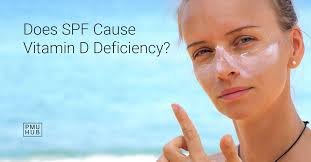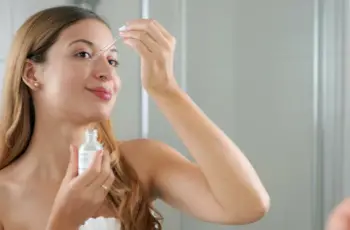
Can You Still Get Enough Vitamin D If You Wear Sunscreen Every Day?
Sunscreen is a crucial part of protecting your skin from harmful UV rays, especially during the summer months.
But with the growing concerns about vitamin D deficiency, some people wonder whether regularly wearing sunscreen could hinder their body’s ability to produce this essential vitamin.
After all, UVB rays from the sun are required for vitamin D synthesis in the skin. So, does wearing sunscreen block this process? Let’s dive into the details.
What is Vitamin D and Why is it Important?
Vitamin D is a fat-soluble nutrient that plays a key role in maintaining bone health, supporting the immune system, and regulating nerve function.
Most people get the majority of their vitamin D through exposure to sunlight, though it’s also found in certain foods and supplements.
When your skin is exposed to UVB rays from the sun, a reaction occurs that helps produce vitamin D in the body.
Specifically, UVB rays interact with a compound in the skin known as 7-dehydrocholesterol, turning it into vitamin D3, which is then activated and used by the body.
However, while UVB rays are essential for this process, they also come with risks, such as sunburn and an increased risk of skin cancer. That’s where sunscreen comes in.
Does Wearing Sunscreen Block Vitamin D Absorption?
The short answer is: No, wearing sunscreen does not block vitamin D absorption in any significant way.
While sunscreen does block UVB rays, studies show that sunscreen has little to no impact on vitamin D production.
Experts agree that even if you wear sunscreen with a high SPF, some UVB rays will still penetrate your skin and help produce vitamin D.
Robert Den, MD, a radiation oncologist and medical officer of Alpha Tau Medical, explained that “sunscreen has little to no impact on vitamin D levels.”
Even though sunscreen with SPF 30 blocks around 97% of UVB rays, the small percentage that does make it through is typically enough to produce adequate vitamin D.
Moreover, people often don’t apply sunscreen properly. Dermatologists recommend using about an ounce (the amount in a shot glass) to cover exposed skin and reapplying it every two hours.
Since most people don’t apply it generously, they may still get some sunlight exposure, contributing to vitamin D production without significantly increasing the risk of skin damage.
How Much Vitamin D Do You Actually Get From the Sun?
The amount of vitamin D you can produce from the sun depends on several factors:
Skin Color: People with darker skin have more melanin, which reduces their ability to produce vitamin D in response to sunlight. They may need longer sun exposure than those with lighter skin tones.
Age: As we age, our skin’s ability to produce vitamin D diminishes.
Time of Day: UVB rays are most potent between 10 a.m. and 4 p.m., so exposure during these hours will be the most efficient for vitamin D production.
Location and Environment: Where you live matters. People living closer to the equator receive stronger UV rays year-round.
On the other hand, those in areas with more cloud cover or air pollution may experience reduced UVB exposure.
Clothing: People who cover most of their skin with clothing or sunscreen may not produce as much vitamin D compared to those who wear less clothing in the sun.
Even with sunscreen, some vitamin D production occurs through incidental exposure, such as walking to the car or spending time outside without full sun protection.
Can You Get Enough Vitamin D Without Exposing Yourself to the Sun?
For most people, it’s not necessary to skip sunscreen to get enough vitamin D.
You can maintain healthy vitamin D levels through diet and supplements if you’re concerned about the risks of sun exposure.
Here are some ways to optimize your vitamin D intake:
Diet: Some foods naturally contain vitamin D, such as fatty fish (salmon, mackerel, tuna), fortified dairy products, eggs, and mushrooms exposed to UV light.
Many plant-based milk options and cereals are also fortified with vitamin D.
Supplements: Vitamin D supplements are widely available and are a great option if you have concerns about your vitamin D levels.
The recommended daily intake for most adults is 600 IU (15 mcg), although many people may need more if they’re deficient.
Safe Sun Exposure: If you do want to get some vitamin D from the sun, it’s generally safe to have 10–15 minutes of unprotected sun exposure on your face, arms, or legs several times a week.
However, this varies based on your skin tone and the UV index. People with darker skin may require longer exposure.
The Risks of Skipping Sunscreen
While getting enough vitamin D is important, skipping sunscreen is not the solution.
Prolonged sun exposure without protection significantly increases the risk of skin damage, including premature aging, sunburn, and skin cancer.
In fact, skin cancer is one of the most common types of cancer, affecting over 5.3 million people annually in the U.S.
For the sake of your skin, always apply sunscreen when spending extended periods outdoors, even if you’re only getting small bursts of sun exposure.
Use a broad-spectrum sunscreen with an SPF of 30 or higher and reapply it every two hours, or more often if you’re swimming or sweating.
How to Get Enough Vitamin D Safely
Use sunscreen to protect your skin from harmful UV rays, especially during peak sun hours.
Spend time outdoors but without overexposing your skin to direct sunlight. Small, incidental sun exposure can still help with vitamin D production.
Incorporate vitamin D-rich foods into your diet. Fatty fish, eggs, fortified dairy products, and plant-based alternatives are excellent sources.
Consider taking a supplement if you’re at risk of deficiency. If you’re unsure, ask your healthcare provider to test your vitamin D levels and determine the best approach for your needs.
Conclusion
While sunscreen does reduce UVB exposure, it does not block vitamin D production entirely. The benefits of sunscreen far outweigh any minimal effect it may have on vitamin D levels.
By ensuring safe sun exposure, eating a balanced diet, and taking supplements when necessary, you can get enough vitamin D without compromising your skin health.
Always remember to talk to your healthcare provider if you’re concerned about your vitamin D levels, and prioritize sunscreen use to protect yourself from the harmful effects of UV radiation.


